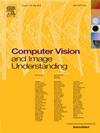YES: You should Examine Suspect cues for low-light object detection
IF 4.3
3区 计算机科学
Q2 COMPUTER SCIENCE, ARTIFICIAL INTELLIGENCE
引用次数: 0
Abstract
Object detection in low-light conditions presents substantial challenges, particularly the issue we define as “low-light object-background cheating”. This phenomenon arises from uneven lighting, leading to blurred and inaccurate object edges. Most existing methods focus on basic feature enhancement and addressing the gap between normal-light and synthetic low-light conditions. However, they often overlook the complexities introduced by uneven lighting in real-world environments. To address this, we propose a novel low-light object detection framework, You Examine Suspect (YES), comprising two key components: the Optical Balance Enhancer (OBE) and the Entanglement Attenuation Module (EAM). The OBE emphasizes “balance” by employing techniques such as inverse tone mapping, white balance, and gamma correction to recover details in dark regions while adjusting brightness and contrast without introducing noise. The EAM focuses on “disentanglement” by analyzing both object regions and surrounding areas affected by lighting variations and integrating multi-scale contextual information to clarify ambiguous features. Extensive experiments on ExDark and Dark Face datasets demonstrate the superior performance of proposed YES, validating its effectiveness in low-light object detection tasks. The code will be available at https://github.com/Regina971/YES.
是的:你应该检查低光物体检测的可疑线索
低光条件下的目标检测面临着巨大的挑战,特别是我们定义为“低光目标背景欺骗”的问题。这种现象源于不均匀的光照,导致物体边缘模糊和不准确。大多数现有的方法都集中在基本特征增强和解决正常光和合成低光条件之间的差距。然而,他们往往忽略了现实环境中不均匀光照带来的复杂性。为了解决这个问题,我们提出了一种新的低光目标检测框架,您检查可疑(YES),包括两个关键组件:光平衡增强器(OBE)和纠缠衰减模块(EAM)。OBE通过使用反色调映射、白平衡、伽玛校正等技术来恢复暗区域的细节,同时在不引入噪声的情况下调节亮度和对比度,强调“平衡”。EAM专注于“解纠缠”,通过分析受光照变化影响的物体区域和周围区域,并整合多尺度上下文信息来澄清模糊特征。在ExDark和Dark Face数据集上的大量实验证明了所提出的YES具有优越的性能,验证了其在低光目标检测任务中的有效性。代码可在https://github.com/Regina971/YES上获得。
本文章由计算机程序翻译,如有差异,请以英文原文为准。
求助全文
约1分钟内获得全文
求助全文
来源期刊

Computer Vision and Image Understanding
工程技术-工程:电子与电气
CiteScore
7.80
自引率
4.40%
发文量
112
审稿时长
79 days
期刊介绍:
The central focus of this journal is the computer analysis of pictorial information. Computer Vision and Image Understanding publishes papers covering all aspects of image analysis from the low-level, iconic processes of early vision to the high-level, symbolic processes of recognition and interpretation. A wide range of topics in the image understanding area is covered, including papers offering insights that differ from predominant views.
Research Areas Include:
• Theory
• Early vision
• Data structures and representations
• Shape
• Range
• Motion
• Matching and recognition
• Architecture and languages
• Vision systems
 求助内容:
求助内容: 应助结果提醒方式:
应助结果提醒方式:


